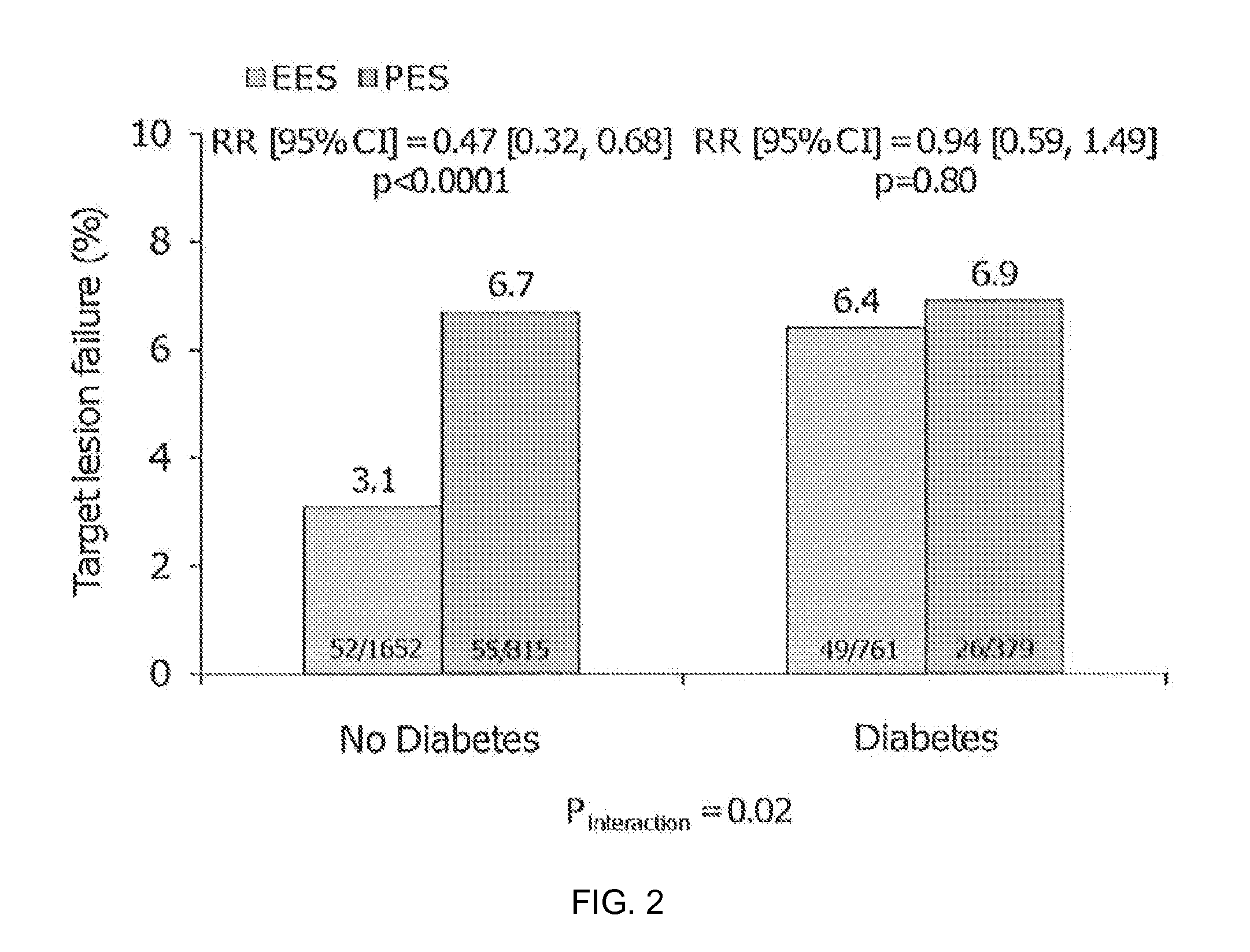Bioresorbable Polymer Scaffold Treatment of Coronary and Peripheral Artery Disease in Diabetic Patients
a bioresorbable polymer and diabetic patient technology, applied in the field of bioresorbable polymer scaffold treatment of coronary and peripheral artery disease of diabetic patients, can solve the problems of general less favorable clinical outcomes of diabetic patients
- Summary
- Abstract
- Description
- Claims
- Application Information
AI Technical Summary
Benefits of technology
Problems solved by technology
Method used
Image
Examples
Embodiment Construction
[0035]Various embodiments of the present invention include treatment of coronary artery disease and peripheral artery disease in diabetic patients with bioresorbable polymer stents. These methods of treatment generally result in lower rates of adverse events and failure than prior art methods. The bioresorbable stents can include a support structure in the form of a scaffold made of a material that is bioresorbable, for example, a bioresorbable polymer such as a lactide-based polymer. The scaffold is designed to completely erode away from an implant site after treatment of an artery is completed. The scaffold can further include a drug, such as an antiproliferative or an anti-inflammatory agent. A polymer coating disposed over the scaffold can include the drug which is released from the coating after implantation of the stent. The polymer of the coating is also bioresorbable.
[0036]The present invention is applicable to, but is not limited to, self-expandable stents, balloon-expandab...
PUM
 Login to View More
Login to View More Abstract
Description
Claims
Application Information
 Login to View More
Login to View More - R&D
- Intellectual Property
- Life Sciences
- Materials
- Tech Scout
- Unparalleled Data Quality
- Higher Quality Content
- 60% Fewer Hallucinations
Browse by: Latest US Patents, China's latest patents, Technical Efficacy Thesaurus, Application Domain, Technology Topic, Popular Technical Reports.
© 2025 PatSnap. All rights reserved.Legal|Privacy policy|Modern Slavery Act Transparency Statement|Sitemap|About US| Contact US: help@patsnap.com



